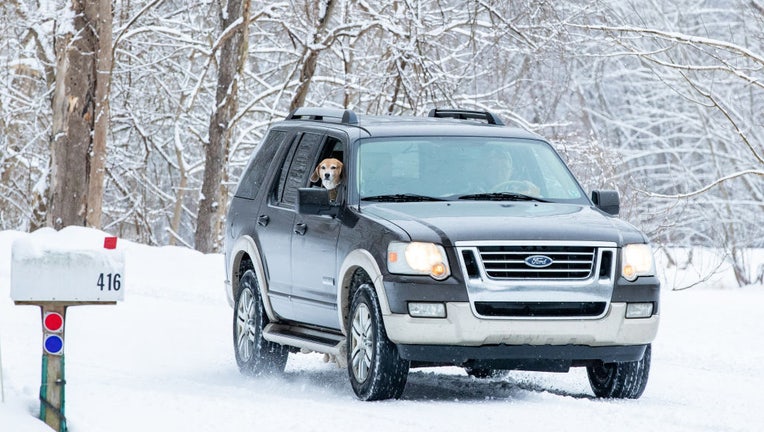A dog sticks its head out of an SUV while the driver is driving on a snowy road. (Paul Weaver/SOPA Images/LightRocket via Getty Images)
Winter is already tough on your car because of these conditions, but drivers can make things even more difficult by turning on the car to warm it up before driving.
One thing to do when it's cold outside is to start your car and let the engine warm up for a few seconds before you drive. Some automotive experts believe this may not help preserve the engine.
Related: Preparing your vehicle for winter freezing, what you need to know
Here are some tips for warming your car in cold weather without hurting your engine.
Firestone Complete Auto Care explains on its website that cars with modern fuel injection systems can be driven by simply starting the engine without warming the car.
Auto service companies say that leaving the engine at idle can damage the engine, and the smoke emitted by the engine pollutes the air, thus minimizing the fuel efficiency of the car, which is harmful to the environment. points out.
Related: Prepare your home and car for freezing temperatures
Firestone says drivers should pack up, start their cars without idling, and drive in the cold. Leaving it idling in the winter is bad for your engine and expensive to repair. Firestone, citing his 2009 study, says Americans waste $5.9 billion in gas annually while idling.
During winter, most car manufacturers recommend that drivers pull off quietly after 30 seconds. According to the Department of Energy, the engine warms up faster while driving, allowing the heating to turn on sooner while lowering fuel costs and reducing emissions.
Related: Here's how far electric cars lose in the cold
For electric vehicle drivers, Napa shares helpful tips on its company blog. Napa says the most effective way to preserve battery range on a cold day is to let the EV run for a few minutes before getting out of the roadway to give the cabin time to warm up.
Napa says it's better to keep the car connected to the grid and stay connected because the EV uses it for heating instead of the battery. Warming up the car before unplugging and driving is recommended in EVs as it helps conserve battery range.
If you're heating your EV at home, Napa recommends leaving your EV connected to a Level 2 charger. Plugging your car into a 120 volt outlet may not produce enough voltage to heat your car. Doing so may reduce battery range.
This story was reported from Washington DC
